
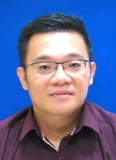
Prof. Mohd Hilton Bin Ahmad
Universiti Tun Hussein Onn Malaysia, Malaysia
Speech Title: Feasibility Study of Foam Concrete Beam Externally-Bonded with KFRP Sheet
Abstract:The effect of KFRP composite sheets as a strengthening material in improving the load-carrying resistance of lightweight foam concrete beams were conducted from experimental study. The study employed three parametric strengthening schemes (i.e., KFRP length, woven architecture types and KFRP thickness). Four-points bending test were conducted, and respective failure modes and ultimate load at failure were discussed. All the strengthened beam specimens failed mostly in shear mode and, to a lesser extent, in FRP fracture. Despite the absence of de-bonding failure, improvement of strengthening using KFRP sheet technique was exhibited. Later, Extended Finite Element Method (XFEM) Modelling was incorporated following failure mode exhibited. Strength predictions incorporating the traction-separation relationship using XFEM techniques. Validation work with experimental datasets showed good agreements with average discrepancies of less than 10%.

Assoc. Prof. Jiwei Wen
Dept. Underground Engineering, School of Civil Engineering / Shijiazhuang Tiedao University, China
Dr. Jiwei Wen is an Associcate Professor in Civil Engineering, specializing in the fields of Geological Engineering, Civil Engineering, Trenchless Technology and Drilling & Tunneling Engineering. He holds B.A. and Ph.D. from Jilin University in 2009 and 2014. Later, he worked at Dept. Geological Engineering, College of Environment and Civil Engineering, Chengdu University of Technology. In the meantime, he has finished postdoctoral researches at the State Key Laboratory of Geohazard Prevention and Geoenvironment Protection (SKLGP), Chengdu University of Technology. Moreover, he studied at Trenchless Technology Center at Louisiana Tech University as a Visiting Scholar from 2017 to 2018, USA. Now, he changed his work to Dept. Underground Engineering, School of Civil Engineering, Shijiang Tiedao University, China. So far, he has presided over more than ten scientific research programs, main including National Natural Science Foundation of China (NSFC), Application Fundamental Research Programs of Sichuan Science and Technology Agency, National Key Laboratory Open Fund Projects, etc. In addition, he has published more than 20 papers, and authorized 10 national invention patents and 25 utility model patents. Furthermore, he is the reviewers of many international academic journals which are collected by SCI and domestic academic journals, such as Journal of Cleaner Production, Petroleum Science, Journal of the Brazilian Society of Mechanical Sciences and Engineering, Water Science and Engineering, Journal of Cluster Science, Coal Geological & Exploration, and Drilling Engineering , etc.
Speech Title: Research on the Key technologies of Trenchless Pipe Jacking in Urban Underground Space Development and Utilization
Abstract:Pipe jacking is a typical trenchless technology for urban underground space development and utilization. It has been widely used in the construction of underground structures, including underground culvert, passage, parking lots, utility tunnel, etc. To compare with the conventional open-cut construction method, it has many obvious advantages, i.e., no road excavation, no impact on the surface traffic, little impact on the surface ecological environment, and it can be used in railway, highway, farmland, historic sites, rivers and other sites that cannot be excavated, etc. In recent years, pipe jacking is being developed and applied in the direction of deep overburden, long distance, large pipe diameter and complex curve trajectory. In the process of pipe jacking, the jacking force provided by the jacking equipment is used to overcome the penetration resistance in front of the cutter head and the friction resistance between the pipe bodies and formation. However, the penetration resistance is almost constant, the friction resistance increases with the increase of jacking distance, pipe diameter and soil covering depth. Therefore, how to effectively reduce the friction resistance is the key technique of trenchless pipe jacking construction. Herein, some crucial factors related the friction resistance are discussed, and some feasible techniques to reduce the friction resistance are also presented. The relevant results and conclusions could provide some valuable suggestions and scientific guidance to better apply and develop pipe jacking in future engineering practice.
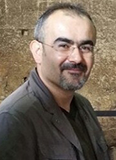
Prof. Hüseyin Bilgin
Department of Civil Engineering, EPOKA University, Albania
Huseyin Bilgin is the Professor of Civil Engineering at Epoka University, Tirana Albania. He is actively taking part in teaching, research and the practice of structural and earthquake engineering, with emphasis on the response, analysis and design of reinforced concrete and masonry structures.
He teaches the compulsory core courses Engineering Mechanics and Mechanics of Materials for second-year students and, he is the coordinator of the elective courses Introduction to Structural Dynamics, Supervised Independent Study and Research and Introduction to Earthquake Resistant Design in the 7th and 8th semesters of the area of structural engineering specialization. He also teaches the graduate courses Structural Dynamics and Earthquake Engineering.
His main research interests are related to the response of structures to extreme loads focusing on the areas of structural and earthquake engineering with the emphasis on problems of non-linearity and performance evaluation of members, connections and structures.
He has been involved in several research projects in these areas and has worked as an expert consultant on numerous engineering projects mostly made of reinforced concrete, but also of other structural materials. He has also participated in various national and international scientific activities related to structural and earthquake engineering.
He supervises PhD, MSc and undergraduate students studying in the above fields.
Speech Title: Assessment of analysis procedures for seismic performance evaluation
Abstract: In this talk, an overview of current trends in seismic design and assessment will be discussed. Inelastic analysis methods within the framework of deformation based seismic assessment will be classified. The performance objectives commonly associated with reinforced concrete framed buildings will be identified. Modeling and acceptance criteria associated with various performance based design guidelines will be explained. The transition from linear to nonlinear engineering philosophy will be addressed. Then, a detailed performance assessment on a selected case study building will be presented and some general conclusions will be drawn regarding the feasibility of introducing new methodologies in seismic guidelines.
| Past Keynote Speakers |

Qing Wang, Ph.D
Professor and Director
Institute of NanoEngineering
College of Civil Engineering and Architecture
Shandong University of Science and Technology
Prof. Qing Wang received his doctoral degree from the Tongji University for a work on interface strength of fiber reinforced composites in 1996. He became in 1998 a full Professor at the Shandong University of Technology, China. In 2000, he joined National Institute of Advanced Industrial Science and Technology (AIST), Japan. In 2014 he moved to Shandong University of Science and Technology, China, as Taishan Distiguished Professor. In 2017 he served as the Dean of the department of Materials Sci Eng. Now he works there as the Director of Institute of Nanoengineering. Prof. Qing Wang' main area of research is fabrication of advanced functional materials and its application in civil engineering. This involves the development of new methods for structural monitoring and maintenance.
Title:Study of anti-chlorine corrosion of cement mortar in chloride salt environment
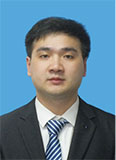
Accos. Prof. Yongding Tian
School of Civil Engineering, Southwest Jiaotong University
Yongding Tian received his Ph.D from the School of Civil Engineering at Southeast University and the Department of Civil Engineering at Monash University (Australia). After his graduation, Yongding joined Southwest Jiaotong University as an Associate Professor in July 2021. His research interests include structural health monitoring and diagnosis, noncontact vision-based measurement, smart sensing technology and structural realiability analysis and performance degradation mechanism investigation. He has gained financial support from National key research and development program, the National Natural Science Foundation of China, Postgraduate Research & Practice Innovation Progaram of Jiangsu Province. He has published nearly 20 high-quality SCI-indexed journal articles, including the journal of Computer-aided Civil and Infrastructure Engineering(Top 1 Journal in Civil Engineering,IF=11.775), Nano Energy(Top journal,IF=17.881),Mechanical Systems and Signal Processing (Top journal,IF=6.823), Structure Control and Health Monitroing, Engineering Structures, Journal of Sound and Vibration, etc. His research output has been applied to the noncontact vortex-induced vibration measurement of Humen Suspension Bridge, the health monitoring of Sutong Yangtze River Bridge and the cable tension force measurement of Nansha Suspection Bridge. He has awarded Golden Medal of the 46th Geneva Inventions, the second prize of National Science and Technology Progress Award of China, best paper award of the 12th Research Symposium for Chinese PhD Students and Scholars in Australia and the Gold Prize in the 6th China International College Students “Internet+” Innovation and Entrepreneurship Competition. And he is served as the reviewer of the journal of Mechanical Systems and Signal Processing, Journal of Structural Engineering(ASCE) and Experimental Techniques.
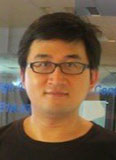
Prof. Hongyuan Zhou
Beijing University of Technology
Dr Hongyuan Zhou is a professor at Beijing University of Technology. He graduated from Xi’an Jiaotong University with BEng and MEng, respectively, and was awarded Ph.D. from Nanyang Technological University, Singapore. Hongyuan specializes in the response and protection of structures against blast, impact, and shock, as well as structural dynamics. He has published about 50 SCI-indexed papers in international journals. Hongyuan once served as guest editor of the International Journal of Impact Engineering and is an editorial board member of several journals such as International Journal of Protective Structures and Shock and Vibration. He also serves as an academic board member of Tianjin Key Laboratory of Precast Structures and Intelligent Construction, and deputy director of the Youth Committee on Disaster Prevention and Mitigation of Infrastructures, Seismological Society of China. He is an active referee for various organizations and journals.
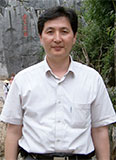
Prof. Xiuxin Wang
Southeast university, China
Research Area: Structural Disaster Design/Structure Inspection/Bridge Design/Seismic Isolation/Sustainable Building Development
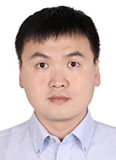
Assoc. Prof. Yang Wu
Guangzhou University, China
Title:Experimental investigation on mechanical behavior and particle crushing of calcareous sand retrieved from South China Sea
Abstract: Calcareous sand containing weak particles originated from the deposition of skeletal residue of marine organisms is susceptible to significant particle crushing under compression and shearing. The breakage of grains results in excessive deformation and foundation failure. A series of isotropically drained and undrained triaxial compression tests were performed on reconstituted calcareous sand samples at different initial densities and at a wide range of confining stresses. The amount of particle crushing for calcareous sand after shearing was measured and quantified. Experimental results demonstrate that the shear response of calcareous sand had been well interpreted within the critical state framework. The amount of particle crushing for calcareous sand increases with increasing density and confining stress. Compared with the undrained condition, a larger amount of particle crushing of calcareous sands is observed in the drained triaxial compression test. Stress-dilatancy curves exhibit similar varying tendency for calcareous sand. Multiple critical state lines for calcareous sands with different initial densities are identified in the void ratio and logarithm of the mean stress plane. Considering the variation in stress ratio at the critical state induced by particle crushing, all stress paths are normalized to determine the state bounding surface for calcareous sand at varying densities and stresses.
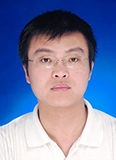
Prof. Hongfu Zhou
Shandong University of Science and Technology, China
Research Area: Engineering Geology and Geological Hazards